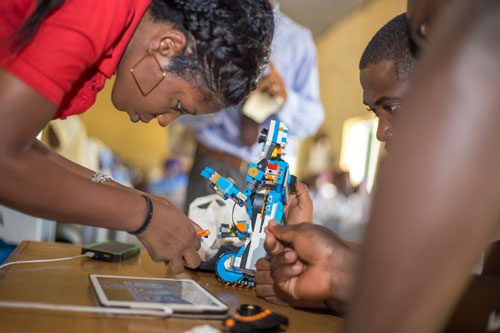The integration of robotics into early childhood education (ECE) is gaining global attention as a means to foster critical thinking, creativity, and technological literacy among young learners. In Nigeria, where educational challenges such as resource scarcity and outdated curricula persist, robotics offers a transformative potential. This article investigates the role of robotics in ECE in Nigeria, exploring its adoption, pedagogical impact, and practical examples driving change.
Read more about Tech
Adoption of Robotics in Nigerian ECE
The adoption of robotics in Nigerian ECE is still in its nascent stages, influenced by technological infrastructure and policy support. Ogunlade and colleagues note that while urban private schools are beginning to incorporate robotics, rural areas lag due to limited access to electricity and internet The Nigerian government’s National Policy on Education has yet to explicitly prioritize robotics in ECE, unlike STEM-focused initiatives in secondary education. However, private sector efforts, such as those by EduTech startups like Robotify Nigeria, are introducing robotics kits to preschools in Lagos, signaling a gradual shift. Adebayo argues in Techpoint Africa that these initiatives face scalability issues due to high costs and a lack of trained educators. Critical analysis reveals that without broader governmental backing, adoption remains uneven, favoring privileged urban centers.
Register to attend the Connect Nigeria Business Mixer
Pedagogical Impact on Young Learners
Robotics in ECE enhances cognitive and social development by engaging children in hands-on, problem-solving activities. A study by Eze and Osuya found that Nigerian preschoolers using robotics kits like Bee-Bot demonstrated improved spatial reasoning and teamwork skills compared to peers in traditional settings. These findings align with global research, such as Papadakis et al., who highlight robotics’ role in fostering computational thinking in early learners. However, the impact is tempered by contextual challenges. For instance, untrained teachers often struggle to integrate robotics into curricula, reducing its effectiveness, as noted by Okonkwo in a Guardian Nigeria report. Thus, while robotics holds promise, its pedagogical benefits depend on teacher preparedness and curriculum alignment.
Sign up for the Connect Nigeria daily newsletter
Practical Examples and Initiatives
Current initiatives illustrate robotics’ emerging role in Nigerian ECE. Robotify Nigeria’s program in Lagos introduces children aged 4-6 to coding through Ozobot robots, reaching over 500 learners since 2023. Similarly, the STEMKids Africa project in Abuja uses LEGO robotics to teach problem-solving, impacting 300 preschoolers in 2024. These examples, though limited in scope, showcase practical applications that spark interest in STEM. Yet, their urban focus underscores a digital divide, as rural schools remain largely excluded, a concern echoed by Agbata in Punch Newspapers. Scaling such initiatives requires investment and partnerships, which are currently insufficient.
Sign up for the Connect Nigeria daily newsletter
Conclusion
Robotics in Nigerian ECE holds significant potential to revolutionize learning by enhancing adoption, improving pedagogy, and providing practical engagement. However, disparities in access, teacher training, and policy support hinder its widespread impact. Addressing these gaps could position Nigeria as a leader in innovative ECE within Africa.

